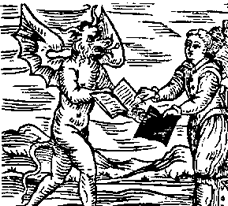“The devil’s in the detail” has become a popular and oft-quoted way of indicating that (per Wikipedia) "something may seem simple, but in fact the details are complicated and likely to cause problems".
For Jews who attend synagogue
this Shabbat, the Torah reading appears to be little other than a double dose of
detail. From Exodus 35:4 to 40:33 we
read of the manufacture of the components of the Tabernacle and its
accoutrements, of the materials used for those purposes and of their weight and
dimensions. The message is clear: every detail is of crucial importance and all
materials must be accounted for. This is the message that we are to internalise
and carry with us in all our dealings with God.
What does Pirkei Avot
have to say about this? On one level, Rabbi Akiva
teaches (3:19) הַכֹּל
לְפִי רוֹב הַמַּעֲשֶׂה
(“…everything is an accordance with the generality of action”) that our
assessment of events, and of our own conduct, is ultimately not focused on
minutiae but on a wider perspective. On the other hand, the importance of what
we may regard as small details is recognised too. Thus even the smallest of
mitzvot are regarded as being of great value (4:2) and the loss of just one
item of Torah learning is described as being akin to spiritual suicide (3:10). We
are also taught that we should not think lightly of any material item, since there
is nothing in the world that does not have its place, that is to say, its use
or function (4:3).
We can see from this
that, in our daily lives, we must bifurcate our view. We should recognise the
potential significance of even the smallest and most apparently trivial detail
while retaining a sense of proportion and not letting go of the bigger picture.
Keeping the details and
the big issues simultaneously in our sights is a challenge, but this is part of
the challenge of Avot itself. How we respond to others is a matter of middot,
of measuring our response. As parents, employers or colleagues, there are times
when we sense that it is important to overlook even something that is of major
importance but that, on other occasions, we should take a firm line when even a
small issue erupts. We may not always get the balance right, but Avot at least
gives us some guidance as to how we might just do so.
It is only since the
1960s that “the devil’s in the detail” has become the prevalent version of this
saying. Earlier versions refer not to the devil but to God. A French version,
"Le bon Dieu est dans le détail" ("the good God is in the
detail") is generally attributed to the nineteenth century novelist Gustave
Flaubert, while a German version, “Der liebe Gott steckt im Detail”, has been in
circulation since the 1920s.
How, or why, did the
devil displace God? I doubt that this shift was caused by post-War anti-God
sentiment or, to opposite effect, by a reluctance to make any allusion to the
Deity that was not motivated by awe or deep respect. More likely, I feel, is the
widely-shared sentiment that details are a nuisance and that their presence in
great quantity obscures the bigger picture. As such, they should be attributed to
the mischievous machinations of a malign figure, this being designated “the
devil”.
